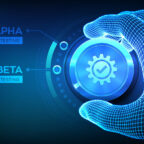As healthcare software continues to play a pivotal role in patient care, developers and quality assurance (QA) professionals face unique challenges in ensuring the reliability and security of these systems. In this blog post, we delve into the complexities of healthcare software testing and highlight the significance of innovative approaches, particularly automated testing, in the realm of electronic medical record (EMR) system development. Drawing insights from the recent “Vital Signs” study conducted by the Healthcare Information and Management Systems Society (HIMSS) and Keysight Technologies, we shed light on the limitations of traditional testing approaches, the dilemmas of DIY testing, and the benefits of automated testing.
Healthcare Software Testing Challenges
Healthcare software presents distinct challenges due to the immense volume and sensitivity of data involved. Developers must ensure that systems are robust, secure, and efficient while meeting the needs of various stakeholders, including clinicians, administrators, and patients. However, the complexity of the healthcare software landscape introduces unique challenges in its development and testing processes.
According to the HIMSS study, healthcare organizations experienced one in three third-party data breaches in 2021. Another research conducted by the University of Utah revealed that EMR systems failed to detect up to 33% of drug interactions and medication errors with potential harm to patients. These findings highlight the critical need for rigorous testing to prevent vulnerabilities that could jeopardize patient safety or compromise data privacy.
In addition to security concerns, the interconnectedness of healthcare systems, such as EMRs, telehealth applications, and picture archiving and communication systems (PACS), adds another layer of complexity. Ensuring seamless data exchange and functionality among these systems poses significant testing challenges.
Limitations of Traditional Testing Approaches
Despite the widespread adoption of test automation in various industries, the healthcare sector has been slower to embrace it. The HIMSS study reveals that only 15% of healthcare providers have implemented test automation platforms.
Traditional manual testing approaches struggle to keep pace with the complexity, frequent upgrades, and customizations of EMR systems. The survey highlights several challenges faced by manual testers in healthcare:
- Scaling Testing: Only 33% of manual testers express confidence in their organizations’ ability to scale testing to meet new requirements.
- Testing Analytics: Merely 38% are satisfied with the availability of clear testing analytics, which are crucial for assessing software quality and identifying areas for improvement.
- Test Coverage: A mere 38% believe their organizations can adequately develop test coverage across all devices and browsers, posing challenges in ensuring comprehensive testing across diverse platforms.
Automated Testing in EMR Software Development
Automated testing emerges as a compelling solution to address the limitations of manual and DIY testing approaches. The HIMSS study reveals that approximately 75% of healthcare providers plan to adopt test automation within the next five years.
Automated software testing offers numerous benefits. It enables healthcare organizations to scale their testing capabilities in a cost-effective manner. Testers can focus on more complex activities, such as exploratory testing, by freeing themselves from repetitive tasks. Furthermore, automation provides clearer testing analytics, enhancing software quality assessment and identifying areas for improvement.
Early adopters of automated testing solutions have reported improved scalability, with 80% expressing satisfaction in their organization’s ability to meet emerging testing requirements.
The Future of EMR Software Quality Assurance
Healthcare software testing is at a critical juncture, transitioning from traditional manual methods to more efficient, automated approaches. Developers play a vital role in driving this transition by understanding the unique challenges of testing EMR systems and embracing automated testing methodologies.
By acknowledging these challenges and adapting to the evolving healthcare landscape, developers can deliver high-quality, patient-centered software. Collaboration between developers and QA professionals is crucial for a successful software development process and positive patient outcomes.
Healthcare software testing poses unique challenges due to the volume and sensitivity of data involved. Traditional testing approaches struggle to keep pace with the complexity and customization of EMR systems. The adoption of test automation is on the rise, with benefits such as scalability, improved analytics, and comprehensive test coverage. By embracing automated testing methodologies, software testing engineers can play a pivotal role in ensuring the reliability, security, and efficiency of healthcare software, ultimately enhancing patient care and outcomes.
To gain deeper insights into the HIMSS survey findings and best practices, download the full Vital Signs report here.



